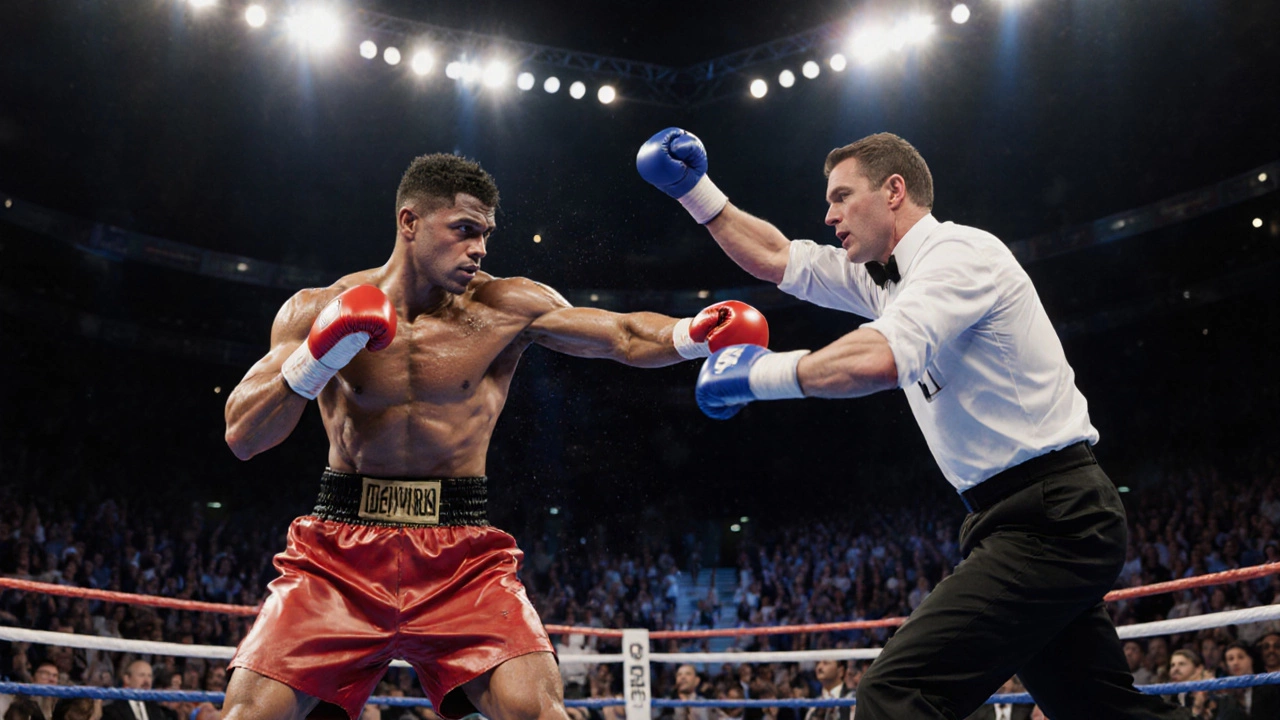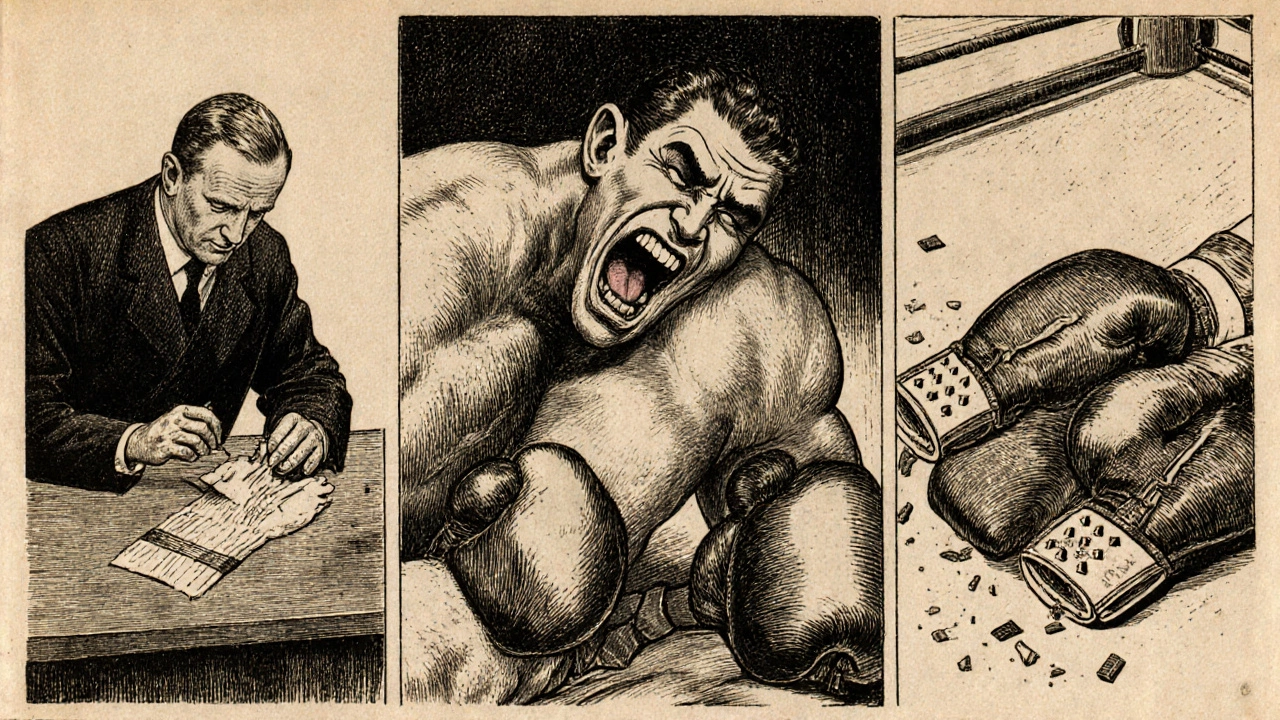
Boxing Matches October 24, 2025
What Is Banned in Boxing? Rules, Illegal Moves and Prohibited Gear
Boxing Rule Compliance Checker
Check Boxing Rule Compliance
Select a boxing technique or gear item to determine if it's legal in professional bouts
Ever wondered why a referee can stop a fight in an instant? The answer lies in a long list of actions and gear that are banned in boxing. Knowing what’s off‑limits not only helps fans understand controversial stoppages, it also keeps fighters safe and the sport fair.
Boxing is a combat sport where two opponents exchange punches while wearing gloves and following a strict rule set. The sport is governed worldwide by bodies such as the International Boxing Federation (IBF), the World Boxing Council (WBC), and the World Boxing Association (WBA). Each organization publishes a rule book that outlines exactly what fighters can and cannot do inside the ring.
Why Rules Matter: Safety and Fair Play
Boxing’s history is littered with brutal incidents that prompted rule changes. From early bare‑knuckle bouts that left fighters maimed, to modern controversies over illegal strikes, the sport has evolved to protect athletes. The bans serve three core goals:
- Prevent serious injury: Moves that target vulnerable areas, like the eyes or throat, can cause permanent damage.
- Maintain competitive balance: Prohibited tactics, such as headbutts, give an unfair advantage.
- Uphold the sport’s integrity: Clear rules make judging transparent and reduce post‑fight disputes.
Common Illegal Techniques
Below is a quick rundown of the most frequently cited illegal moves. Most referees will issue a warning for a first offense, but repeated violations lead to point deductions or disqualification.
| Technique | Status | Typical Penalty |
|---|---|---|
| Low blow (punch below the belt) | Illegal | Warning → Point deduction → Disqualification |
| Headbutt | Illegal | Warning → Point deduction → Disqualification |
| Elbow strike | Illegal | Immediate Disqualification |
| Knee strike | Illegal | Immediate Disqualification |
| Eye gouge | Illegal | Disqualification + possible suspension |
| Bite (e.g., “Ali vs. Frazier” incident) | Illegal | Disqualification |
| Hitting after the bell | Illegal | Warning → Point deduction |
| Spitting out the mouthpiece to gain a break | Illegal | Warning → Point deduction |
| Throwing the opponent (slam) | Illegal | Disqualification |
| Holding without attempting a punch | Illegal (excessive) | Warning → Point deduction |
Prohibited Gear and Equipment
It’s not just about what you do with your hands-the gear you wear is also regulated. The following items are strictly forbidden in professional bouts:
- Headgear (except in amateur contests where safety regulations differ).
- Metal studs or plates sewn into gloves or shoes.
- Gloves that exceed the weight limit set by the sanctioning body (usually 8‑10 oz for professionals). \n
- Any kind of protective cup that is not approved by the overseeing commission.
- Improvised weapons such as weighted wristbands or “knuckle rings”.
Using any of these can lead to immediate disqualification, fines, and a possible suspension from the governing federation.

Regional Variations: How Different Commissions Interpret the Rules
While the IBF, WBC, and WBA share a core rule set, local athletic commissions sometimes add their own nuances. For example, the Nevada State Athletic Commission (NSAC) penalizes “excessive clinching” more harshly than the New York State Athletic Commission. Meanwhile, the British Boxing Board of Control (BBBoC) bans “spitting out the mouthpiece” outright, whereas some U.S. states allow a warning first.
These differences matter for fighters who travel internationally. A move that earns a warning in one country might result in a disqualification in another. The safest approach is to study the specific rules of the venue before stepping into the ring.
What Happens When a Rule Is Broken?
Referees have three main tools at their disposal:
- Verbal warning: Used for minor infractions or first‑time offenses.
- Point deduction: The referee signals the offending boxer and the judges subtract a point from the scorer’s card.
- Disqualification (DQ): The bout ends immediately, and the offending boxer is declared the loser.
In severe cases, the commission may also impose post‑fight penalties such as fines, license suspensions, or mandatory medical examinations. These sanctions aim to deter repeat offenders and keep the sport’s reputation intact.

Real‑World Cases That Shaped the Rules
History provides vivid examples of why certain bans exist:
- Mike Tyson vs. Evander Holyfield (1997): Tyson bit Holyfield’s ear, an act that led to an immediate DQ and a $3 million fine. The incident cemented the ban on biting and sparked stricter mouthpiece policies.
- Antonio Margarito (2009): Found with illegal hand wraps containing plaster. He was stripped of his title and faced a 90‑day suspension, prompting tighter oversight of equipment checks.
- Joe Frazier vs. Muhammad Ali (1971 “Fight of the Century”): Both fighters were warned multiple times for low blows. The bout highlighted the need for clear low‑blow definitions, leading to the modern “belt line” rule.
Quick Summary / Key Takeaways
- Illegal moves include low blows, headbutts, elbow/knee strikes, eye gouges, biting, and hitting after the bell.
- Prohibited gear covers headgear in pro fights, metal studs, oversized gloves, and unapproved protective cups.
- Referees can warn, deduct points, or disqualify; commissions may add fines or suspensions.
- Rule interpretation can vary by region-always check the local commission’s handbook.
- Historical controversies have directly shaped today’s strict bans.
What is considered a low blow in boxing?
A low blow is any punch that lands below the fighter’s beltline, typically targeting the groin area. Referees issue a verbal warning for the first offense and may deduct a point for subsequent blows.
Are gloves ever illegal?
Gloves become illegal when they exceed the weight limit set by the governing body (usually 8‑10 oz for pros). Using heavier gloves gives an unfair defensive advantage and results in a disqualification.
Can a boxer wear headgear in professional matches?
No. Headgear is only permitted in most amateur contests. Professional bouts ban it to preserve the traditional look of the sport and because it can obscure vision.
What happens if a fighter spits out their mouthpiece?
Spitting out the mouthpiece to gain a break is illegal. The referee will issue a warning; a second offense usually results in a point deduction.
Do rules differ between the IBF and WBC?
Core rules are the same-both follow the Marquess of Queensberry Code-but each body may have slight variations in glove weight limits, mandatory rest periods, and how aggressively they penalize clinching. Fighters must review the specific contract for a bout.




